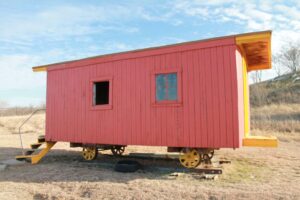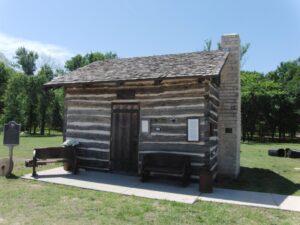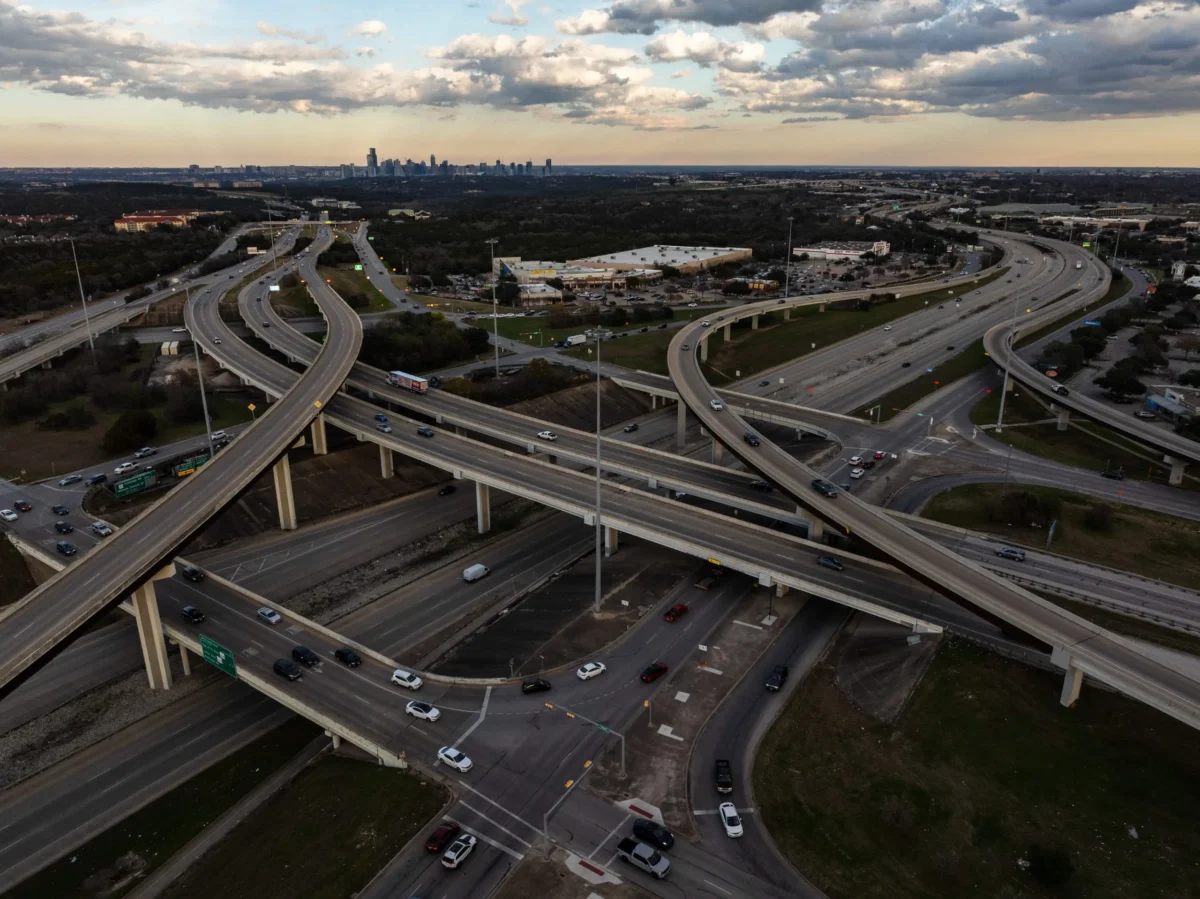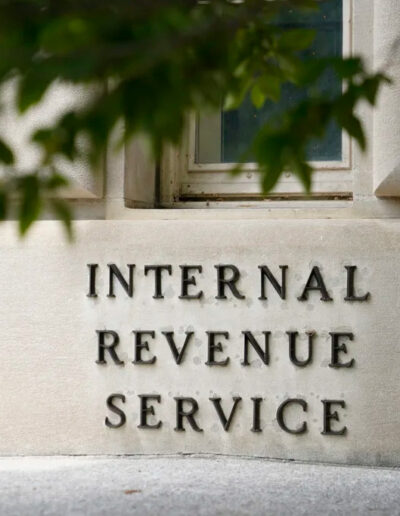
Photo courtesy of Traces of Texas via X
As industries and businesses came and went in the 19th and 20th centuries, North Texans flocked to more populated areas in search of lucrative opportunities. Though most people in these previously bustling communities moved on, the physical properties often remained, creating ghost towns.
There are dozens of abandoned communities scattered throughout Texas. What’s left gives us a glimpse into the state’s history and what life was like way back when. Here are seven North Texas ghost towns to visit.
Thurber
About 75 miles west of Fort Worth lies Thurber, which served as one of the largest bituminous coal producers in all of Texas. Built in 1886, the town was owned by the Texas and Pacific Coal Company. By 1920, about 10,000 people lived there. Beyond coal, Thurber also produced bricks for cities all around Texas.
If you visit the town, you might spot the 128-foot-tall Thurber smokestack — which has stood for over a century — while you’re still on I-20. Other notable remnants include a rail car, a miner’s house, and the restored Saint Barbara’s church. The Thurber Cemetery is the final resting place for approximately 1,000 people, bringing a literal meaning to the term “ghost town.”

Photo courtesy of Wikimedia Commons
Wardville
In 1854 the first key city of Johnson County was Wardville, which sits on the west of what is now Lake Cleburne. That honor didn’t last long, though — back then, Texas state law said county seats had to be as geographically central as possible so two years later Wardville citizens headed five miles west to Buchanan.
The Chisholm Trail Outdoor Museum features free tours around the former Wardville premises and gives you a look at the most intriguing things in the area. Get a glimpse of the oldest log courthouse in Texas and the original cell doors from Wardville’s 1855 jail cell. Pop by the stage station and saloon to see what cowboy life was like in the mid-19th century. The 80-foot stone wall dotted with cattle and cowboy silhouettes is a beautiful greeting to the former town.

Photo courtesy of Johnson County
Belcherville
In the Wes Anderson film “Asteroid City,” Steve Carell’s character sells plots of land in the desert for $10 apiece. Perhaps, he borrowed inspiration from the Belcher brothers, who founded Belcherville in 1886 primarily to sell land plots — for much more than Carell’s asking price; the brothers sought $25 to $150 per plot.
At its peak, the town 15 minutes from the Oklahoma border was home to 30 companies. However, after World War I, fires engulfed the local business district, causing many people to relocate. Two tornadoes hit the town in 2009 and 2013, damaging multiple buildings and a ranch. The destruction adds even more eeriness to the scene.

Photo courtesy of ledaemon1 via YouTube
Eliasville
Located on the Clear Fork of the Brazos River, Eliasville was named after Elias DeLong, who opened the town’s first store in 1878. For the next half-century, it seemed like the town blossomed into a vibrant area. A Presbyterian church helped spearhead community events, and the 1921 oil boom led to an influx of residents, resulting in the incorporation of Eliasville.
However, the growth was short-lived; by the time World War II rolled around, many residents were heading to nearby Fort Worth to find defense work.
Today, you can discover some remnants of peak Eliasville. Two early residents, William and Thomas Donnell, built a grist mill alongside the river. The mill was destroyed twice, most recently in 1927, but what’s left makes for a unique photo opportunity.

Photo courtesy of Wikimedia Commons
Indian Gap
Many of the other towns on this list were named after specific individuals. Indian Gap got its moniker when settlers saw Comanche Indians passing through a gap between two hills to raid their camps.
The community officially settled in 1877 and was just shy of 100 residents by the 1920s. Despite the low population, Indian Gap had several essentials, including a bank, hotel, barber, blacksmith, and a weekly newspaper.
For nearly 60 years, visitors could visit the abandoned Indian Gap school, which was demolished in October 2020. While it’s unusable, the town’s Gulf gas station (formerly a railroad depot) is a cool pit stop.
Bug Tussle
Despite the astuteness of Indian Gap’s settlers, Bug Tussle is perhaps the most uniquely named ghost town in Texas. When founded in the early 1890s, it was known as Truss, a nod to early settler John Truss. Not long after, the name changed to Bug Tussle.
No one can quite agree on where the name came from. The most common tale is that a bug invasion ruined an ice cream social, and the community commemorated the event with a new name. A second story says that the area was a popular picnicking site because it was isolated, and there wasn’t much to do besides watch bugs tussle. Yet another telling says two long-time residents wanted to change the town’s name from Truss to something else, and their argument was interrupted by two tumblebugs fighting. One marveled over the tussling bugs, and the rest was history.
Unfortunately, there’s not much to see in Bug Tussle today. If you’re lucky, you might spot an organization, such as a group of vintage car enthusiasts, that’s chosen the ghost town as its meeting place simply to use “Bug Tussle” on promotional materials.
Hebron
Hebron’s uniqueness lies in its location. The lost town technically still exists, but it’s been swallowed by neighboring Plano and Carrollton. This makes Hebron an interesting detour if you’re heading to either city.
Founded in 1843 as an homage to the biblical town with an identical name, Hebron grew to just under 500 people by 1975. The town had multiple cotton gins and was a hotspot for railway companies to build. Still, the growth of the surrounding areas ultimately led to Hebron’s demise — even if, technically, it’s more populated than ever.
Stroll down First Street to see abandoned storefronts and walk by the church or railroad tracks, which are still in use today. Walk too far in either direction, and you’ll end up in Carrollton or Plano. Just like a ghost, Hebron is merely a fleeting image of the past.
This article first appeared on Good Info News Wire and is republished here under a Creative Commons license.




















